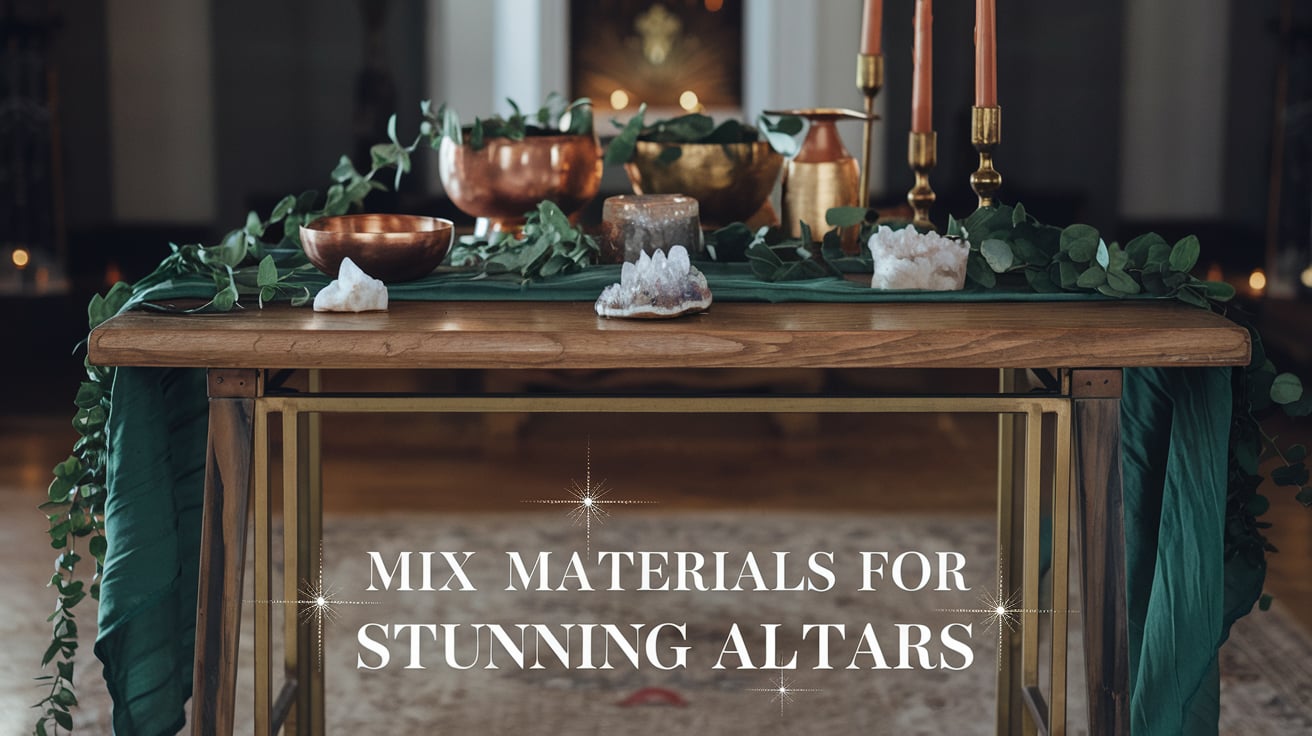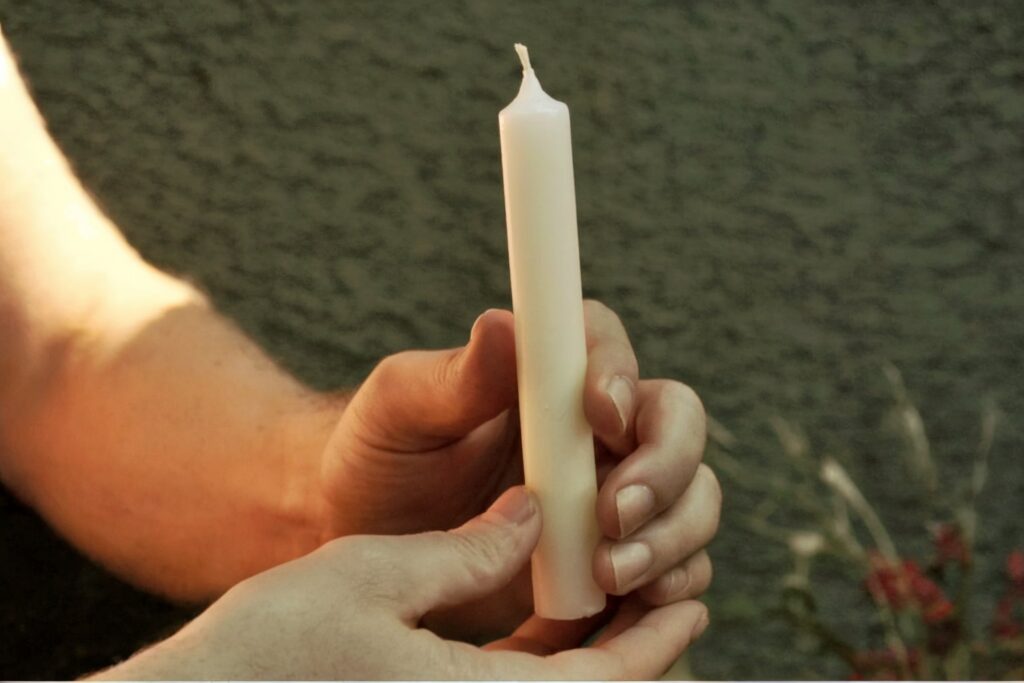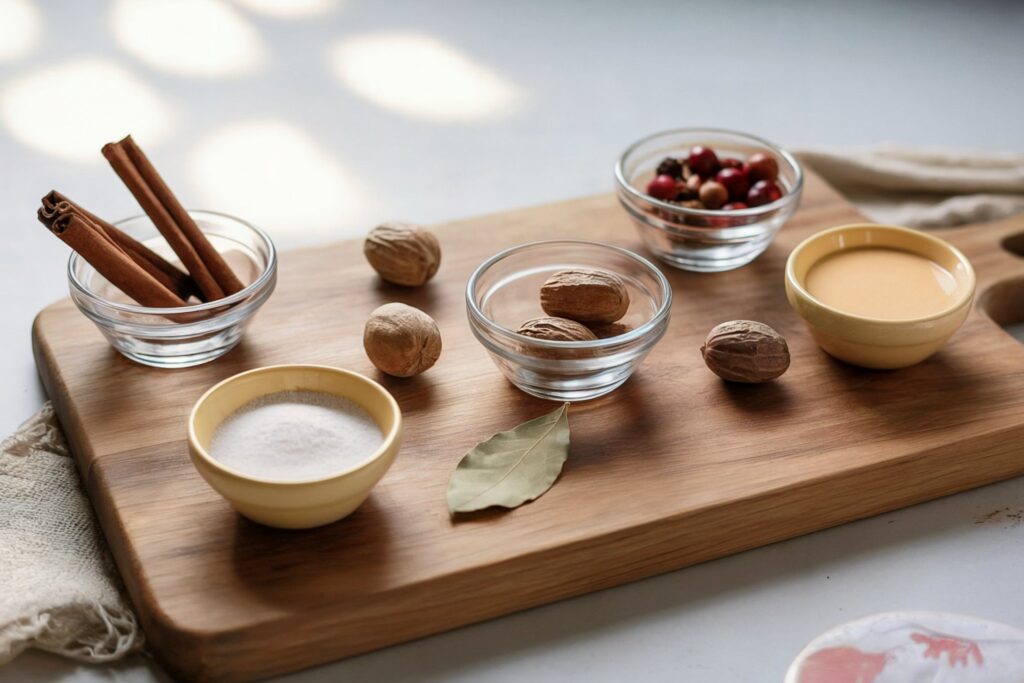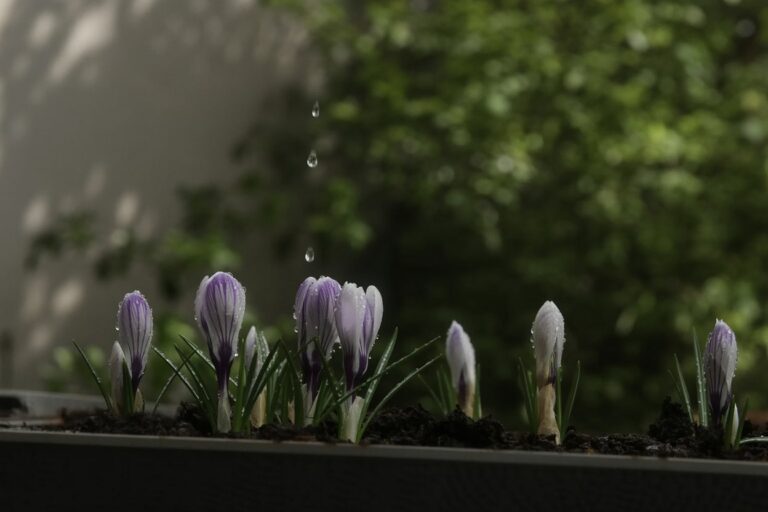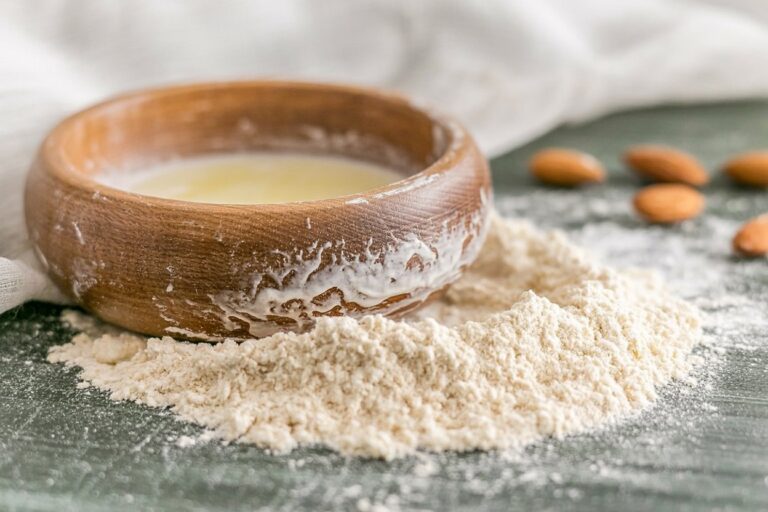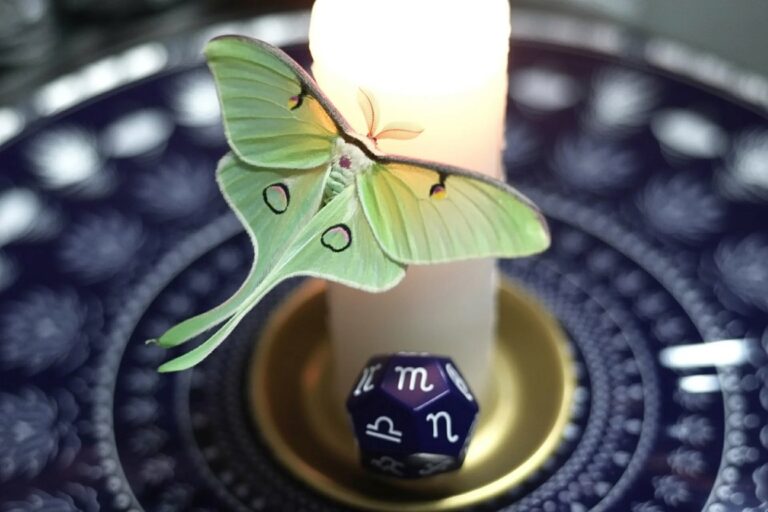Combining Materials for Unique Altar Designs
Please note that posts on this site may contain affiliate links
Creating an altar is a deeply personal and creative process. One of the best ways to make your altar stand out and align with your spiritual practices is by combining different materials. Mixing textures, colors, and elements allows you to craft an altar that resonates with your energy and personal aesthetic. In this guide, we’ll explore how to combine various materials for a harmonious and functional altar setup.
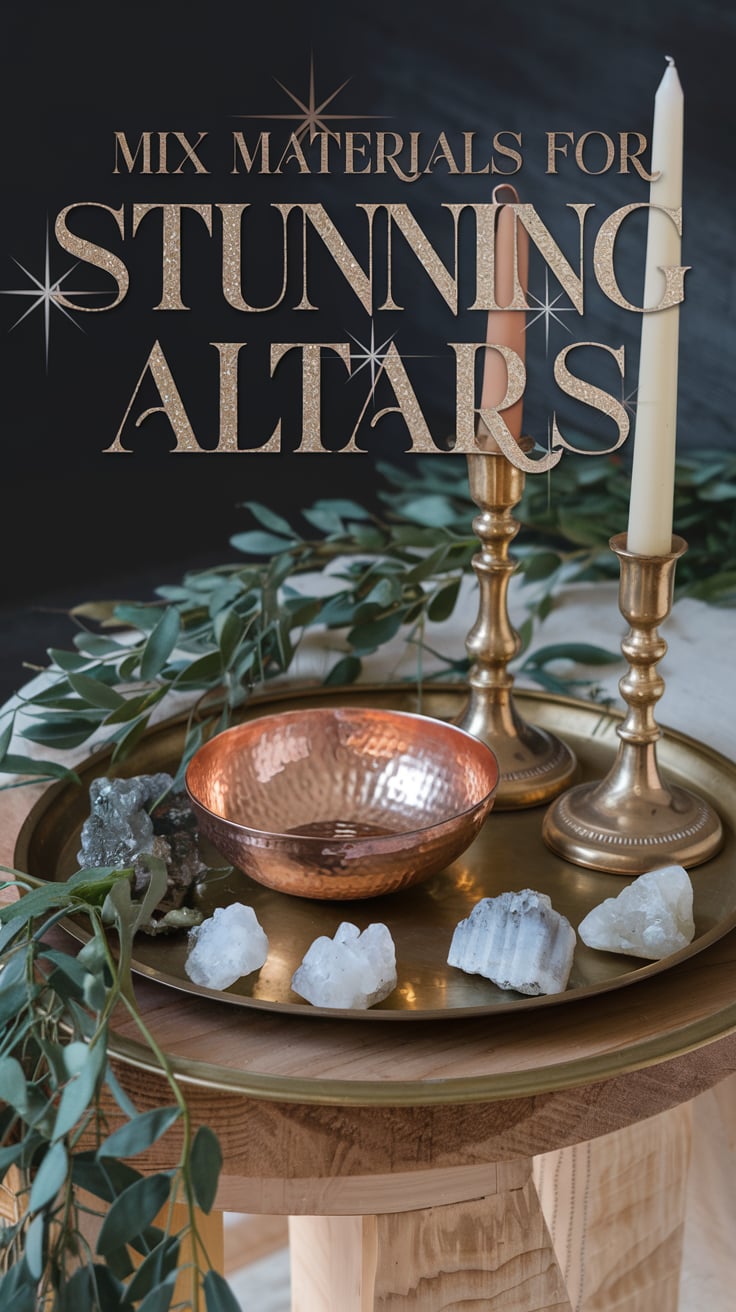
Benefits of Mixing Materials in Altars
- Personalization: Reflect your individuality and spiritual focus.
- Enhanced Energy Flow: Different materials carry unique energies, creating balance and depth.
- Aesthetic Appeal: Mixing materials adds visual interest and richness to your altar.
Popular Material Combinations
Wood and Metal
Combining wood and metal is a classic choice that balances warmth and strength.
- Ideas: Use a wooden base for your altar and accent it with brass or copper bowls for offerings. Incorporate metal candle holders for a polished, elegant look.
- Symbolism: Wood symbolizes growth and life, while metal represents resilience and transformation.
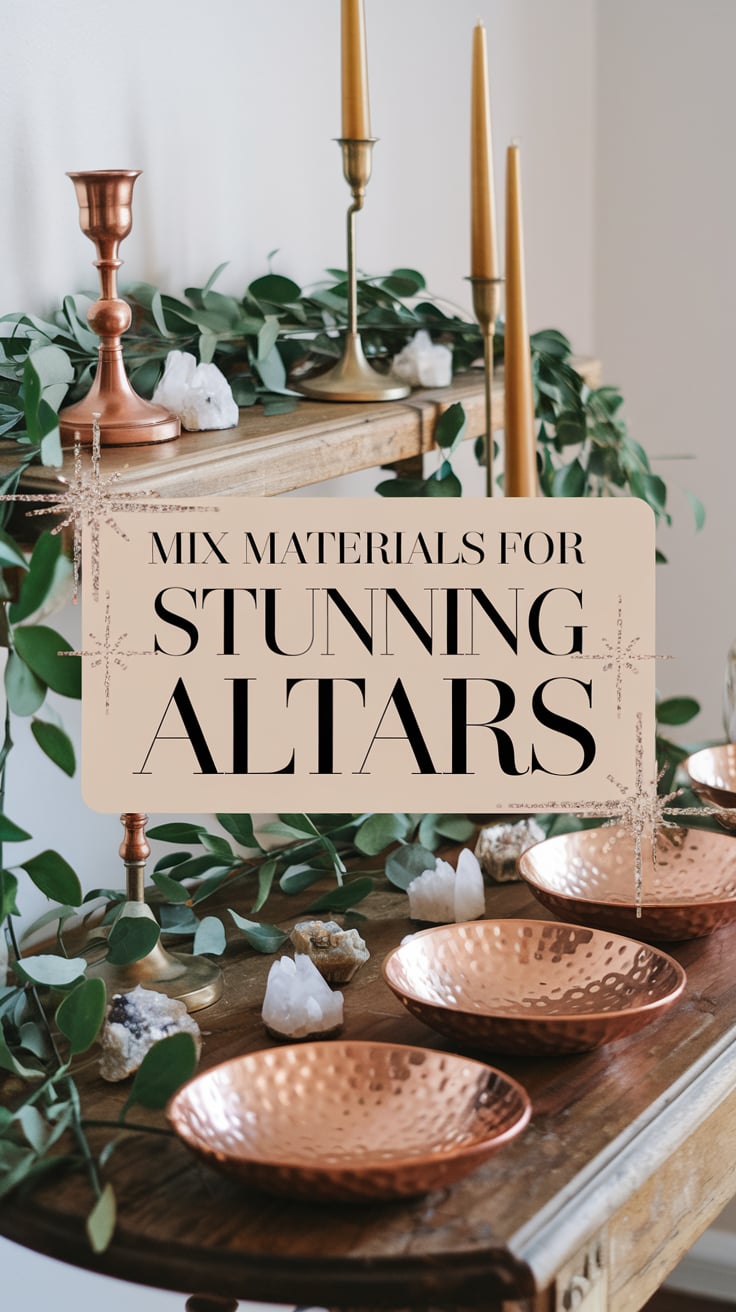
Stone and Fabric
Blending the sturdiness of stone with the softness of fabric creates a dynamic contrast.
- Ideas: Place a marble or granite slab as the altar surface and drape it with velvet or silk. Use small fabric pouches filled with herbs or offerings for a tactile addition.
- Symbolism: Stone provides grounding energy, while fabric adds a layer of comfort and adaptability.
Glass and Crystals
For a modern and ethereal altar, glass and crystals are an excellent combination.
- Ideas: Use a glass shelf or tabletop as the altar base and arrange quartz, amethyst, or selenite crystals on it. Consider adding glass vases filled with water for an elemental touch.
- Symbolism: Glass symbolizes clarity and transparency, while crystals amplify spiritual intentions.
Innovative Material Pairings
Bamboo and Metal
Combine sustainable bamboo with metallic accents for a sleek yet eco-friendly design.
- Ideas: Use a bamboo tray as the altar platform and add iron or silver elements like statues or incense burners.
- Why It Works: Bamboo represents simplicity and renewal, while metal adds a modern edge.
Natural Wood and Seashells
Perfect for altars dedicated to water deities or oceanic themes.
- Ideas: Use driftwood as the base and adorn it with seashells, coral, and pearl-like decorations.
- Why It Works: This combination evokes the calming energy of the sea.
Ceramic and Fabric
Blend handmade ceramic pieces with natural fabrics for an earthy and artisanal vibe.
- Ideas: Place ceramic bowls or vases on a linen-covered altar. Use a clay tile as a centerpiece to hold sacred items.
- Why It Works: Ceramic connects to the earth, while fabric adds softness and warmth.
Stone and Mirrors
Create a reflective and grounded altar by combining stones with mirrors.
- Ideas: Position a small mirror behind a crystal cluster on a stone altar. Mirrors can also be embedded in a stone base for a dramatic effect.
- Why It Works: Mirrors enhance the altar’s energy flow, while stone stabilizes the setup.
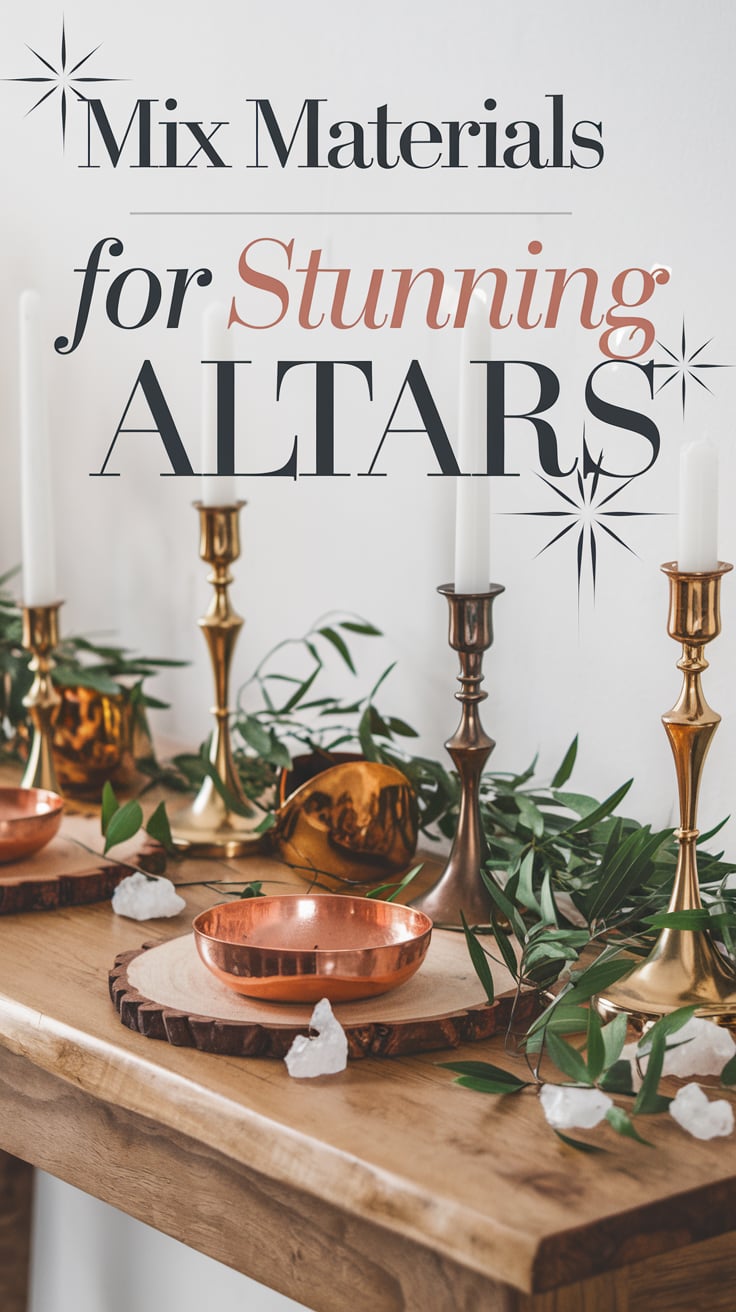
Tips for Combining Materials
- Choose a Dominant Material: Start with one primary material (e.g., wood or stone) and layer others for accents.
- Consider Symbolism: Reflect on the spiritual or elemental properties of the materials you choose.
- Balance Textures: Combine rough and smooth textures for a visually engaging setup.
- Think About Functionality: Ensure that the materials you use are durable and practical for your rituals.
- Experiment: Don’t be afraid to mix unconventional materials to create a unique altar that feels authentically yours.
Where to Source Materials
- Nature: Collect driftwood, stones, or seashells during outdoor explorations.
- Thrift Stores: Find vintage ceramic pieces or metal accents to repurpose.
- Artisan Shops: Support local craftspeople by purchasing handmade items like wooden trays or clay sculptures.
- DIY: Create your own altar components, such as painted stones or upcycled wood bases.
Conclusion
Combining materials for your altar opens up endless possibilities for creativity and spiritual expression. By thoughtfully blending textures, colors, and elements, you can craft a space that feels deeply personal and energetically aligned.
Whether you prefer the elegance of wood and metal, the grounding energy of stone and fabric, or the modern aesthetic of glass and crystals, your altar will become a reflection of your unique spiritual journey.
Let your imagination guide you as you experiment with materials to create an altar that inspires and empowers your practice.

20 Love Spells: From Love at First Sight to Break Up
Transform your romantic life with ‘20 Love Spells: From Love at First Sight to Break Up‘ for only $5.99—unlock the power of love magic to attract, maintain, or end relationships with ease.
How to Bless White Candles for Yule Using Grocery Store Materials
White candles show up at grocery stores for a dollar. Unscented tapers, plain pillars, bags…
Traditional Yule Cookies with Cinnamon, Nutmeg, and Bay Leaf for Solstice Prosperity Magic
You’re standing in a warm kitchen making cookies while the world outside reaches its darkest…
Tips For Working With Lucifer During The Winter Solstice
Winter solstice timing makes sense for working with Lucifer when you look at what’s actually…
Stolas Altar Setup Guide: Study Desk for Goetic Teaching Work
Stolas teaches by training you to look harder. You’re studying moon phases for class and…
How to Build a Working Altar for Goetic King Bael
Bael appears in grimoires as the first king of the Goetia, ruling sixty-six legions. The…
How King Paimon Teaches Arts and Sciences Through Joy and Precision
The Ars Goetia describes the Ninth Spirit, King Paimon, arriving on a dromedary with a…

